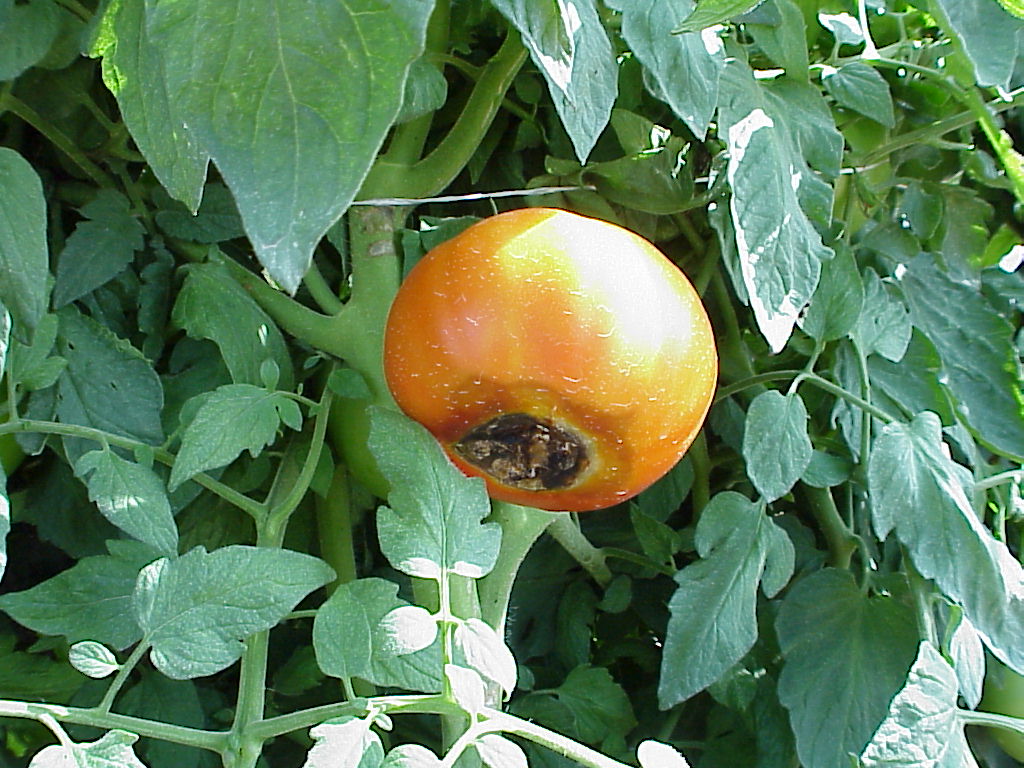By Josh Freeman
As the season begins to heat up you may start noticing blossom-end rot (BER), especially in tomatoes. BER can be a serious drag on total yield with up to 30% total loss.
It happens every year, usually the second week of May, but this year it looks like it may be next week. We are strolling right along, crops are moving beautifully, weather is nearly perfect, and then it happens. Summer shows up. And it often seems to do so very rapidly, over just a few days. Often folks find themselves unprepared and realize so in hindsight.
Usually in the second week of June we often start noticing blossom-end rot (BER), especially in tomatoes. BER can be a serious drag on yield, with up to 30% total loss. BER occurs when cell walls in fruit collapse, most commonly on the blossom end, but can occur on the side of the fruit as well. When this happens usually a fungus invades the tissue that has collapsed and gets an easy meal. This is why most BER fruit will be black on the bottom or blossom end. Blossom-end rot is a calcium deficiency in the fruit, but many times the deficiency in the fruit isn’t related to a lack of calcium in the soil. The problem is often a lack of irrigation water which moves the calcium into the plant.
BER occurs when cell walls in fruit collapse, most commonly on the blossom end, but can occur on the side of the fruit as well.
If your soil is deficient in calcium it’s probably too late in the season to correct it at this point. Soil tests should be done in the fall, and if calcium is low and needs to be added, lime or gypsum should be applied before planting. The reason I say that we realize our error in hindsight is BER doesn’t manifest itself immediately, it takes days to weeks to show up and when we notice it, it is already too late. So when you see BER don’t run out and get a foliar calcium product, the damage is already done. What we generally can do is look back at weather data and see when it happened, or at least speculate. Those fruit that were set or started to swell during “that week” when summer showed up are most likely the ones with BER, if you weren’t prepared. Often irrigation is increased after we notice that the soil is drier than we’d like and the problem is corrected for future fruit. BER can show up in many crops but we most commonly see it in tomatoes.

Blossom-End Rot can show up in many crops, but is most common in tomatoes.
So how much is water is enough?
This isn’t a simple question that can be answered in the next paragraph but there are some resources below that can help. For the most part, in the Panhandle our vegetable crops are setting and swelling fruit by now. That puts our needs at about 0.5 to 0.75 acre inches of irrigation per week. You could also try to maintain soil moisture at 60-100% of field capacity. While this sounds easy on paper it can be difficult to manage and maintain adequate soil moisture without over applying water and leaching soluble nutrients below the root zone. With irrigation, frequent short irrigation cycles are better than infrequent long cycles. When we talk about drought stress don’t think that plants need to be wilted to be drought stressed. This makes it even more complicated to manage.
It’s serendipity that I was scheduled for an article this week. We talk about BER every year, but timing this year was perfect. Keep an eye out for three things, above average heat, low humidity and high winds usually from the southwest. When these three factors combine plants need lots of irrigation to keep up with demand. This is indeed what is forecast for the coming week, so stay ahead of things and don’t waste time stripping cull fruit off of your plants because of BER.